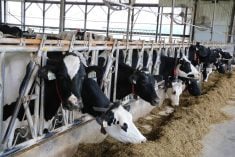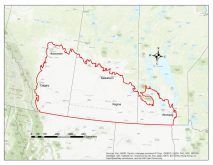Like oil in the 20th century, water could be the essential commodity on which the 21st century will turn.
With seven billion people on the planet as of Oct. 31, water use is exponentially expanding as urbanization and development drive demand like never before more than twice the rate of population increase in the last century, said Kirsty Jenkinson of the World Resources Institute.
Water use is predicted to increase by 50 per cent between 2007 and 2025 in developing countries and 18 per cent in developed ones, Jenkinson said.
Read Also

Local farm businesses, groups look forward to Manitoba Ag Days 2026
Most of agriculture is seemingly at Manitoba Ag Days each January: Manitoba agribusinesses and farm groups look forward to connecting with farmers at the 2026 show.
Factor in the expected impacts of climate change more severe floods, droughts and shifts from past precipitation patterns that are likely to hit the poorest people first and worst and we have a significant challenge on our hands, Jenkinson said.
Will there be enough water for everyone, especially if population continues to rise, as predicted, to nine billion by mid-century?
There s a lot of water on Earth, so we probably won t run out, said Rob Renner, executive director of the Colorado-based Water Research Foundation.
The problem is that 97.5 per cent of it is salty and … of the 2.5 per cent that s fresh, two-thirds of that is frozen. So there s not a lot of fresh water to deal with in the world.
Water risk hot spots
Over a billion people lack access to clean drinking water, and more than two billion live without adequate sanitation, leading to the deaths of five million people, mostly children, each year from preventable waterborne disease, Renner said.
Only eight per cent of the planet s fresh water supply goes to domestic use and about 70 per cent is used for irrigation and 22 per cent in industry, Jenkinson said.
Hot spots of water risk, as reported in the World Resources Institute s Aqueduct onl ine at las at http://insights. wri . o rg/ aqueduct/atlas, include:
” Australia s MurrayDarling basin;
” the Colorado River basin in the U.S. Southwest;
” the Orange-Senqu basin, covering parts of South Africa, Botswana and Namibia and all of Lesotho;
” and the Yangtze and Yellow River basins in China.
Experts say integrated water resource management is required.
Water is going to quickly become a limiting factor in our lifetimes, said Ralph Eberts of the international water-engineering firm Black &Veatch.
He said he sees a reprioritization of resources to address the water challenges posed by changing climate and growing urbanization.
Investors take note
Water concerns are already having severe economic impacts. For example, clothing company The Gap cut its profit forecast by 22 per cent after drought reduced the cotton crop in Texas while gas producer Toreador Resources saw its stock price drop 20 per cent after France banned shale-gas fracturing, primarily over concerns about water quality.
Water risk is more than a corporate concern. In East Africa, for example, climate change could shorten the growing season and cut yields of staple crops like maize and beans. A recent study found that major river basins in Africa, Asia and Latin America could double food production in the next few decades if those upstream work with those downstream to efficiently use the water they have.














